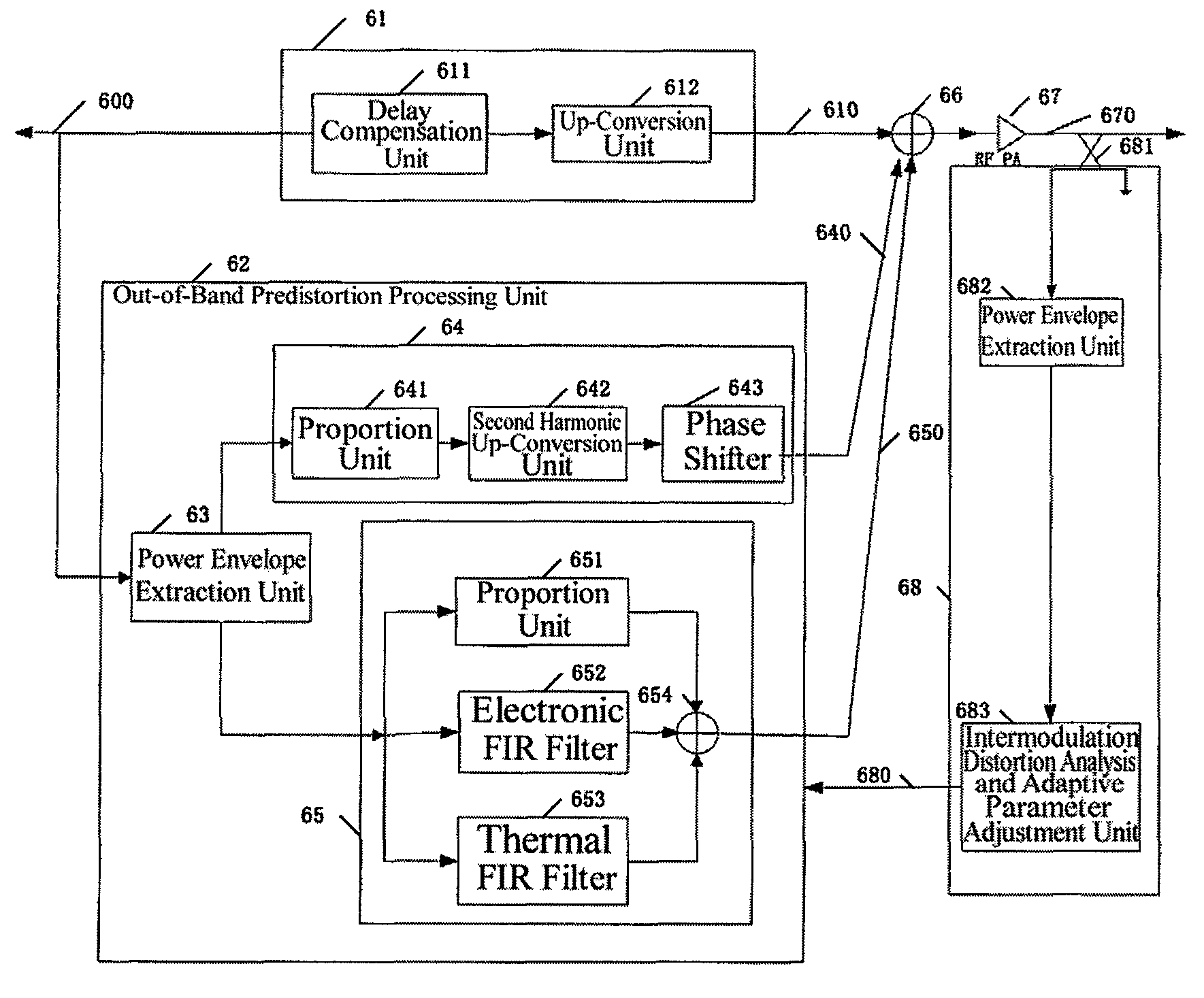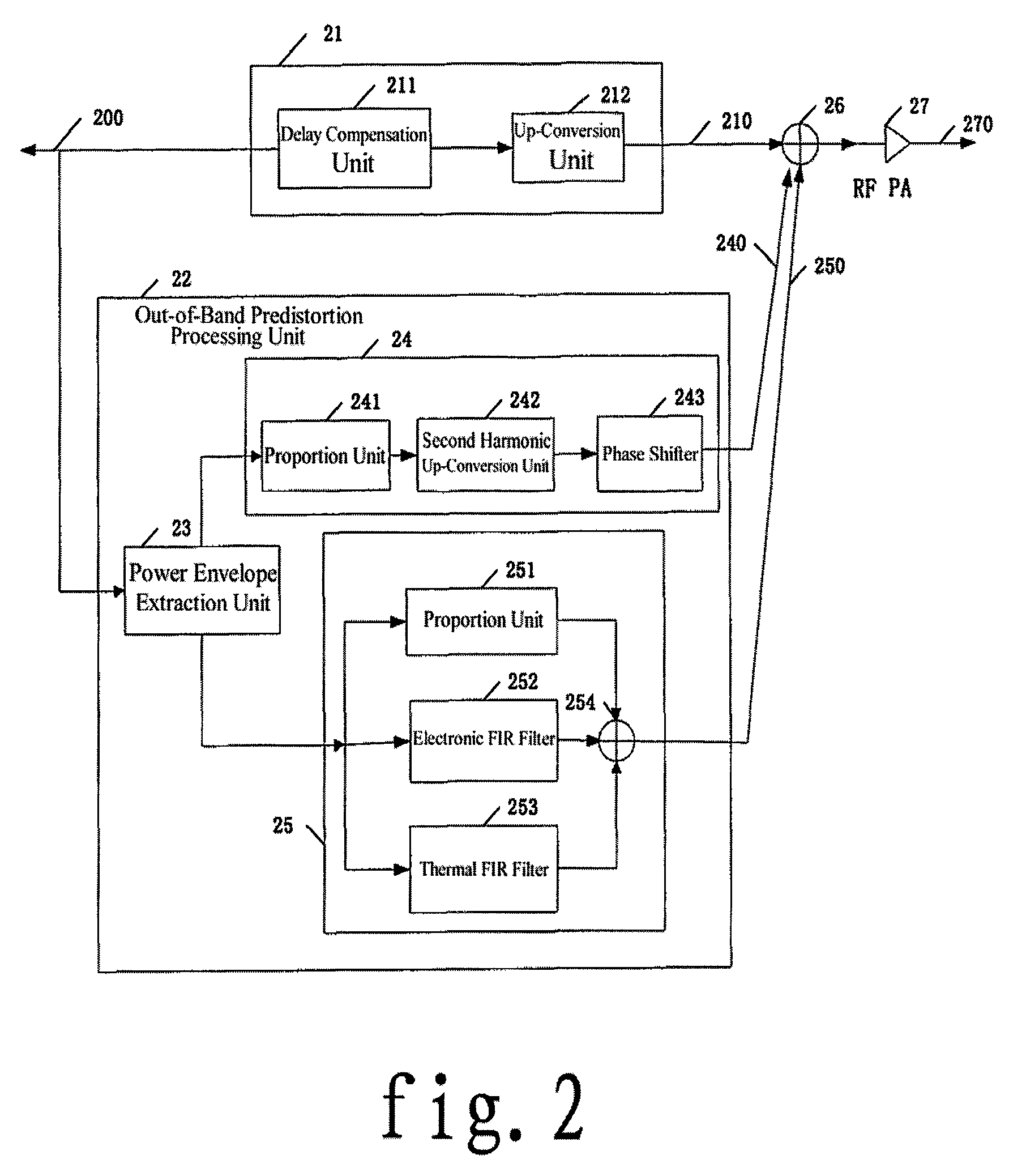Method and system for out of band predistortion linearization
a linearization and out-of-band technology, applied in the field of linearization methods for radio transmitters, can solve the problems of increasing bit error rate, disturbing adjacent radio channels, increasing etc., and achieves the effect of facilitating and simplifying design and application, reducing the power efficiency of amplifiers, and improving the accuracy of compensation
- Summary
- Abstract
- Description
- Claims
- Application Information
AI Technical Summary
Benefits of technology
Problems solved by technology
Method used
Image
Examples
Embodiment Construction
[0034]Preferred embodiments of the present invention will be described in further detail with reference to the accompanying drawings.
[0035]FIG. 1 is a flow chart of a method for out-of-band predistortion linearization in accordance with an embodiment of the present invention. Steps of the method will be described in detail with reference to FIG. 1.
[0036]As shown in FIG. 1, firstly in step 105, receiving the base band or IF signals to be input into the RF power amplifier.
[0037]step 110, directly dividing the received base band or IF signals into two branches, i.e., an in-band signal branch and an out-of-band signal branch, thus, the original base band or IF signals being divided into a branch of in-band signals and a branch of out-of-band signals.
[0038]step 115, processing the in-band signals, directly up-converting the in-band signals to a corresponding radio frequency, which means the in-band signals are not processed for predistortion; in this step, first performing delay compensa...
PUM
 Login to View More
Login to View More Abstract
Description
Claims
Application Information
 Login to View More
Login to View More - R&D
- Intellectual Property
- Life Sciences
- Materials
- Tech Scout
- Unparalleled Data Quality
- Higher Quality Content
- 60% Fewer Hallucinations
Browse by: Latest US Patents, China's latest patents, Technical Efficacy Thesaurus, Application Domain, Technology Topic, Popular Technical Reports.
© 2025 PatSnap. All rights reserved.Legal|Privacy policy|Modern Slavery Act Transparency Statement|Sitemap|About US| Contact US: help@patsnap.com



